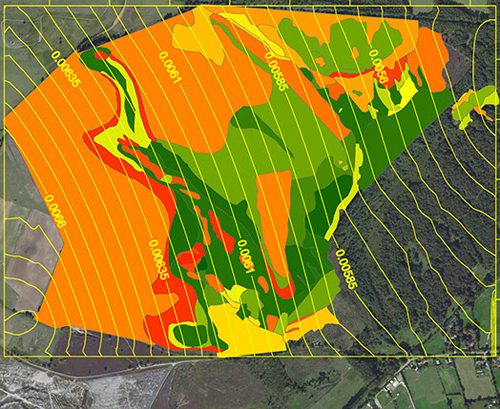
EPR, a planning-focused ecological survey and design consultancy, has launched a standalone Air Quality Assessment service that it says bridges the gap between traditional air quality assessment practice and ecological expertise.
In current practice, says the firm, the long-term impact of air quality on ecosystems and human well-being is still misunderstood, and largely underappreciated across the housing and development sectors, despite being a key ecological issue. Historically, there has been a lack of ecology-specific expertise in air quality assessments, which has resulted in conservative conclusions and a lack of guidance on some of the most pressing issues, such as managing levels of nitrogen deposition.
Air quality practitioners traditionally quantify predicted levels of air pollution, but the results of these models are subsequently either under-utilised, or passed to ecologists who do not have sufficient experience of assessing the likely effects to look beyond published thresholds.
This lack of synergy means that air quality assessment of development proposals often exclusively measures predicted changes in air quality, and does not provide adequate insight into the specific consequences of these changes for habitats and biodiversity – which also impact human well-being in the long-term.
The UK government is currently under fire for not taking sufficient action to tackle breaches in air quality standards, and being pressured to deliver a new air quality strategy in compliance with EU legislation. The economy’s reliance on fossil fuels and manufactured nitrogen-based fertilizer are just some of the causes of the change in air quality and the eutrophication of natural habitats.
A recent report published by Plantlife highlighted that nitrogen levels have tripled in Europe and doubled globally over the last century. Exposure to excess nitrogen deposition and ozone concentrations continues to cause unprecedented changes to nutrient cycles and drives widespread eutrophication of ecosystems and biodiversity loss. The figures show that 63% of the UK’s most sensitive wildlife habitats are being affected by excessive nitrogen deposition, with the most critical levels of excess nitrogen dioxide being found in large urban areas and at the edges of major roads.
Currently, the EC Habitats Directive and UK legislation collectively define Sites of Special Scientific Interest (SSSI), Special Areas of Conservation (SACs), and Special Protection Areas (SPAs). In order to meet the requirements of this legislation, it is critical that both developers and local authorities look at the cumulative impacts of their developments on these protected areas, and on local habitats of conservation importance more broadly.

Having worked closely with air quality consultants across the development sector, EPR has recognised the need for a more coherent process. Consequently, EPR has now brought specialist expertise in house, combining experience in interpreting the results of air quality modelling with a wealth of ecological understanding in this area. EPR’s survey teams are able to establish the actual spatial distribution of sensitive ecological features in relation to predicted pollution levels.
This enables modelling data to be used to map and quantify impacts, and then the effects on the qualifying features of designated sites, and other habitats and species of conservation importance, to be examined. This, more sophisticated, combined approach enables a more efficient and better value service.
EPR has already succeeded in using this approach to guide a number of large-scale UK projects successfully through the planning process. EPR’s air quality assessments use outputs of the air quality model to map the extent of predicted air quality changes on the Zone of Influence of a development. Then, conducting a physical survey followed by habitat mapping, EPR identifies vulnerable areas of the SSSI/SAC/SPA and cross-references the maps to identify how significant the impacts are relative to conservation value.
This targeted service enables a more precise conclusion with added guidance for implementation, such as designing appropriate mitigation or habitat management to counteract predicted negative effects. This both satisfies legislative requirements and, in turn, creates value for development schemes.
“In light of recent scrutiny on the way the UK manages the issue of air pollution, it can no longer be a case of ‘out of sight, out of mind’ for the housing and development sectors,” said Ben Kite, Managing Director, EPR.
“With this combined assessment approach, we’re aiming to present a better model for how air quality impacts on the natural environment can be managed in practice. Predicting how changes in air quality will affect ecological receptors allows changes to be made at the planning stage, to ensure that negative impacts to habitats are prevented or off-set.”
EPR’s air quality expertise stretches to presenting evidence at Public Inquiry, where conclusions from these assessments have been accepted by Natural England and the Environment Agency. EPR has also worked to provide strategic advice to local authorities, helping planners to address air quality on a local level and drive widespread improvements.






